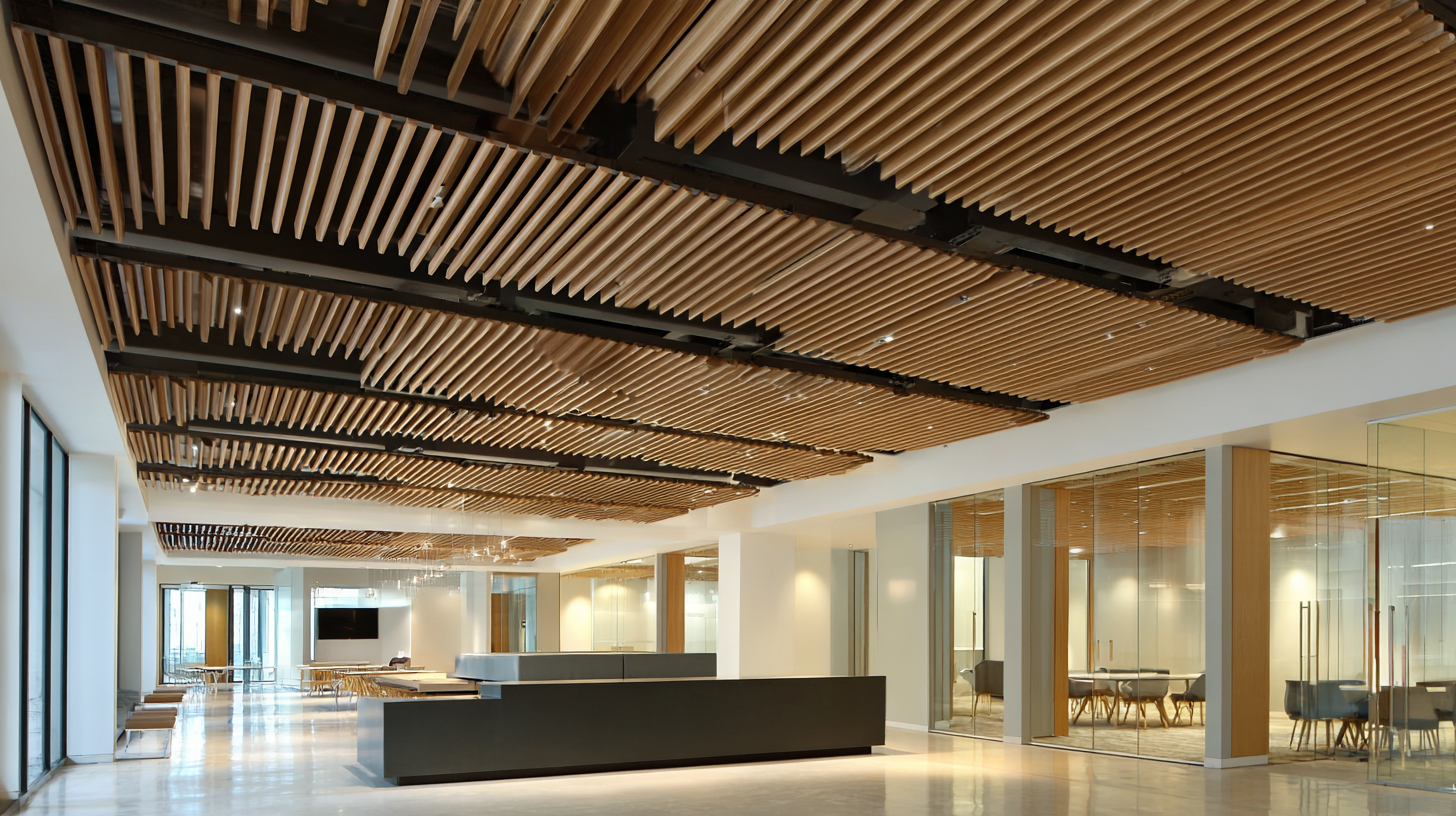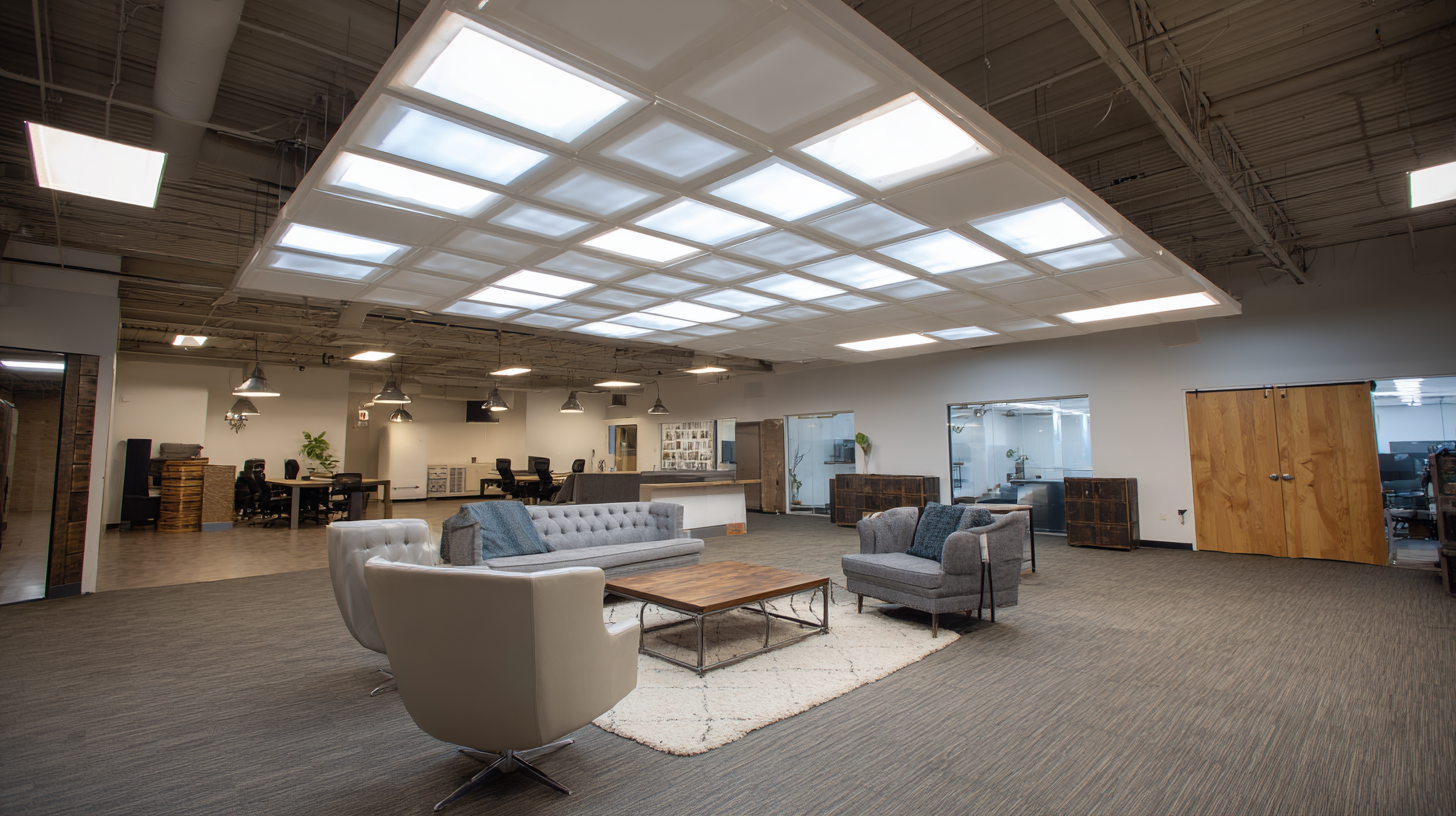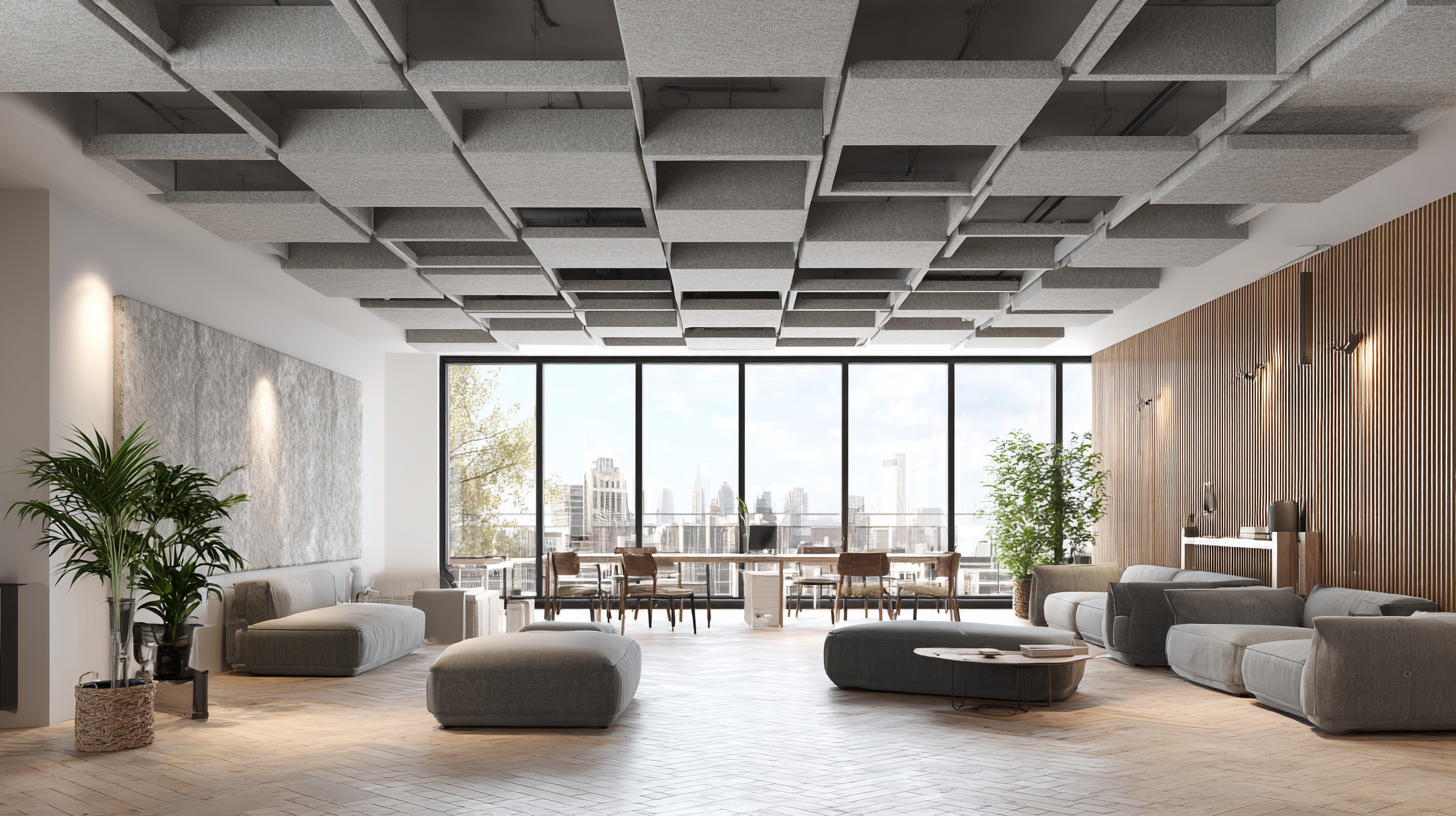Maximizing Sound Quality with Best Commercial Acoustic Panels Strategies for Effective Use
In today's fast-paced, noise-filled environments, the importance of sound quality in both commercial and residential spaces cannot be overstated. Research by the Acoustical Society of America indicates that poor acoustics can significantly impact productivity, with studies showing a 30% decrease in employee performance due to excessive noise. This is where Commercial Acoustic Panels come into play, offering effective sound absorption solutions tailored for various settings, from offices to public venues. With advancements in material technology and design, these panels are not only aesthetically pleasing but also engineered to minimize sound reverberation and improve overall acoustic comfort.

This blog will delve into essential strategies for maximizing sound quality using the best commercial acoustic panels, presenting detailed technical specifications and practical tips on their effective usage. Through understanding the nuances of these solutions, businesses and homeowners alike can create harmonious environments conducive to productivity and well-being.
Understanding the Importance of Acoustic Panels in Modern Spaces
 Acoustic panels have become an essential component in modern spaces, significantly enhancing the sound quality and overall acoustic comfort. Understanding their importance is crucial, especially in environments where multiple sounds converge, such as urban open spaces and offices. In these settings, people's perceptions of sound can influence their experience—whether it's the harmonious blend of nature sounds and conversation or the clarity of speech in a busy workplace. Well-placed acoustic panels can mitigate disruptive noise and foster a more serene atmosphere, ultimately leading to improved productivity and well-being.
Acoustic panels have become an essential component in modern spaces, significantly enhancing the sound quality and overall acoustic comfort. Understanding their importance is crucial, especially in environments where multiple sounds converge, such as urban open spaces and offices. In these settings, people's perceptions of sound can influence their experience—whether it's the harmonious blend of nature sounds and conversation or the clarity of speech in a busy workplace. Well-placed acoustic panels can mitigate disruptive noise and foster a more serene atmosphere, ultimately leading to improved productivity and well-being.
The design and shape of spaces also play a vital role in sound quality. For instance, in architectural settings like mosques, the shape of the mihrab is integral to optimizing acoustics, guiding sound waves to enhance auditory experiences during prayers. Similarly, educational environments require careful consideration of their ceiling designs to ensure they positively affect both sound and visual performance. As we advance into 2024, the integration of acoustic solutions into various sectors—be it retail, office design, or cultural landmarks—reflects a growing recognition of how vital acoustic comfort is to our daily lives. By embracing effective strategies for utilizing acoustic panels, we can create spaces that are not only aesthetically pleasing but also acoustically equipped to meet our needs.
Key Features to Look for in Commercial Acoustic Panels
When selecting commercial acoustic panels, it’s essential to prioritize key features that will enhance sound quality effectively. First and foremost, the material composition plays a vital role. Look for panels made from high-density fiberboard, fiberglass, or polyester, as these materials are known for their sound absorption capabilities. The thickness of the panels also impacts their performance; generally, thicker panels provide better sound control, making them ideal for spaces where noise reduction is a priority.
Another crucial feature to consider is the NRC rating (Noise Reduction Coefficient). This rating indicates how well a panel can absorb sound, with higher ratings signifying more effective sound absorption. Additionally, the aesthetic appeal of acoustic panels should not be overlooked. Choose panels that complement the overall design of your space. Options with customizable colors and textures allow you to maintain a professional look while optimizing sound quality. Ultimately, selecting the right combination of materials, thickness, and aesthetics will ensure that your acoustic panels contribute to a superior listening environment.
Maximizing Sound Quality with Best Commercial Acoustic Panels Strategies for Effective Use - Key Features to Look for in Commercial Acoustic Panels
| Feature | Description | Importance | Typical Material |
|---|---|---|---|
| Absorption Coefficient | Measure of how much sound is absorbed by the panel. | High importance for reducing echo and noise. | High-density fiberglass, Acoustic foam |
| Thickness | The thickness of the panel affects its sound absorption capabilities. | Critical for effective absorption at lower frequencies. | Variations from 1” to 4” |
| NRC Rating | Noise Reduction Coefficient indicates the panel's absorption across frequencies. | Essential for comparing effectiveness of different panels. | Ranges from 0.00 to 1.00 |
| Fire Rating | Safety feature indicating how the material reacts to fire. | Very important for commercial spaces. | Class A, B, or C fire ratings |
| Aesthetics | The visual appeal of the panels and how they fit into the space. | Important for maintaining the design integrity of commercial spaces. | Fabric, wood finishes, or custom prints |
Effective Strategies for Installing Acoustic Panels to Maximize Performance
When it comes to enhancing sound quality in a space, the strategic installation of acoustic panels is crucial. Proper placement can significantly influence the overall performance of your acoustic treatment. Begin by identifying the primary sound reflection points, which usually include the walls opposite the speakers and the first reflection points on the side walls. A simple way to find these points is to have someone move a mirror along the wall while you sit at the listening position; wherever you can see the speakers in the mirror is where you should place your panels.

Tip: Ensure even coverage by installing panels at different heights around the room. This will help reduce flutter echoes and ensure a more uniform sound throughout the space. You can use varying panel sizes and shapes to make the installation visually appealing while maximizing their acoustic effectiveness.
Additionally, consider using bass traps in the corners of the room, as low-frequency sounds tend to accumulate there. These traps are essential for controlling bass frequencies, which can otherwise muddy the sound. Remember to leave some space between the panels and the wall if possible, as this can increase the panel's effectiveness by creating additional sound absorption capacity.
How to Choose the Right Acoustic Panels for Different Environments
When selecting acoustic panels, it’s crucial to consider the specific environment where they will be used. Different settings, such as home theaters, recording studios, or open office spaces, have unique acoustic challenges. According to a report by the Acoustical Society of America, rooms with excessive reverberation require panels designed to absorb high frequencies, while environments with mostly low-frequency noise may need bass traps.
For home theaters, fabric-covered panels that blend aesthetically with décor while providing sound absorption are ideal. A study from the National Institute of Standards and Technology emphasizes that effective panel placement can reduce echo by up to 70%, enhancing the overall listening experience. Conversely, for office spaces, lightweight, moveable panels that can be reconfigured easily allow for flexibility and adaptability to changing acoustic needs. Utilizing the right type of panel in the appropriate environment not only improves sound quality but also contributes to overall well-being and productivity, supporting findings from the World Health Organization that emphasize the importance of sound design in workplaces.
Maintenance Tips to Extend the Lifespan of Your Acoustic Solutions
When investing in commercial acoustic panels, proper maintenance is key to maximizing their effectiveness and longevity. Just as one might ensure that air fryers are cleaned correctly to avoid damage, acoustic panels require specific care to maintain sound quality. Regular dusting with a soft cloth can prevent dirt buildup, while occasional spot cleaning with appropriate cleaners helps preserve their appearance and functionality. Additionally, fabrication materials can vary in sensitivity to moisture; thus, it’s crucial to avoid saturating panels during cleaning, similar to how one would approach delicate kitchen appliances.
Installing acoustic panels in high-traffic areas may lead to wear and tear over time. To extend their lifespan, consider protective measures such as placing mats or runners nearby, akin to placing carpet matting at entrances. Furthermore, regular inspection for signs of damage allows for early interventions, ensuring that minor issues don’t escalate into significant repairs. By following these proactive maintenance tips, you can shield your acoustic solutions from deterioration, ensuring they continue to perform at their best while providing a serene environment.
Maximizing Sound Quality with Acoustic Panels
-

Phone
-

E-mail
-

wechat
wechat

-

whatsapp
whatsapp


